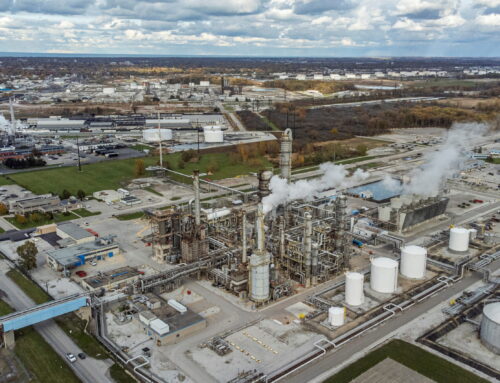Oscar Holland
November 4, 2021
-CNN
A new property development in Austin, Texas, is set to become the world’s largest community of 3D-printed homes.
Scheduled to break ground next year, the project will feature 100 single-story houses “printed” on-site using advanced robotic construction and a concrete-based building material.
Digital renderings of the neighborhood, unveiled last week, show rows of properties with their roofs covered in solar cells. The homes will each take approximately a week to build, according to firms behind the development.
The project is a collaboration between homebuilding company Lennar and ICON, a Texas-based construction firm specializing in 3D-printed structures. The houses have been co-designed by the Danish architecture practice Bjarke Ingels Group.
Although ICON would not disclose the cost of the project, the company said its technology is significantly faster and cheaper than conventional construction methods — partly because it requires less manual labor. The building process will involve five of the firm’s 46-foot-wide robotic “Vulcan” printers, which pipe out a concrete mix called Lavacrete according to a pre-programmed home design.
The firm said it can produce homes up to 3,000 square feet in size, and has previously printed the walls of a house measuring 400 to 500 square feet in just 24 hours (spread over the course of “several days”). Roofs, windows, doors and finishes will be added afterward by Lennar.
In a press release, ICON’s co-founder and CEO Jason Ballard described the Austin neighborhood as a “watershed moment in the history of community-scale development.”
“Construction-scale 3D printing not only delivers higher-quality homes faster and more affordably, but fleets of printers can change the way that entire communities are built for the better,” he is quoted as saying. “The United States faces a deficit of approximately 5 million new homes, so there is a profound need to swiftly increase supply without compromising quality, beauty, or sustainability and that is exactly the strength of our technology.”
In a statement, Martin Voelkle, partner at Bjarke Ingels Group, described the 3D-printed buildings — and their photovoltaic roofs — as “significant steps towards reducing waste in the construction process, as well as towards making our homes more resilient, sustainable and energy self-sufficient.”
Advocates of 3D-printed construction believe it can greatly reduce labor costs and construction time. Research has also suggested that the method can slash waste and carbon dioxide emissions. The ability of 3D printers to construct buildings without formwork (the concrete molds that cement is typically poured into) can significantly reduce overall use of the material, which is responsible for about 8% of global CO2 emissions annually.
A recent study in Singapore, for instance, found that constructing a bathroom unit using 3D printing produced almost 86% less carbon dioxide than conventional construction methods — and was over 25% cheaper. Critics have meanwhile pointed out that 3D concrete printing still relies on a non-renewable material, and that structures’ safety and stability are not specifically addressed by existing building codes.
‘Not science fiction’
While the newly announced Austin project is ICON’s largest to date, the firm has been using 3D printing to build social, or subsidized, housing in Mexico and Texas since 2018. The company also recently revealed that it is working with NASA to make building materials from moon dust, with a view to constructing a lunar base.
Earlier this year, ICON unveiled plans for a separate four-home development in East Austin. In 2019, the company also announced that it is building a community of 50 homes for low-income families in Tabasco, Mexico.
ICON has yet to unveil prices for the homes in its new Austin development. Earlier this year, the first printed home to hit the market in the US — a one-story, 1,400-square-foot space in Riverhead, New York — was listed for $299,000. Another 3D printing firm, Palari Group, recently unveiled plans to build 15 3D-printed properties near Palm Springs, California, with prices for three-bedroom homes starting at $595,000.
Speaking to CNN in 2019, Ballard said that his company’s technology could “deliver a much higher-quality product to the housing market at a speed and price” that is “typically not available” for low-income families. His firm believes its technology can also be used to combat homelessness and may be deployed during disaster relief.
“3D printing is not science fiction,” Ballard said at the time. “We have crossed that threshold from science fiction into reality. In the future, our bet is that this will be humanity’s best hope for a housing solution that matches our highest values and ideals.”




